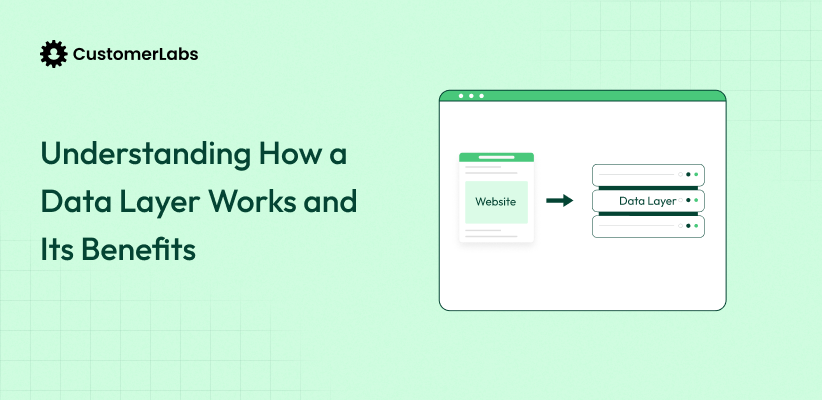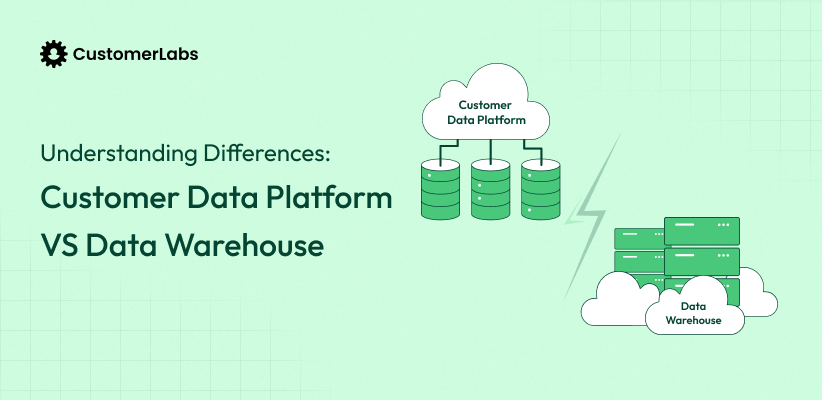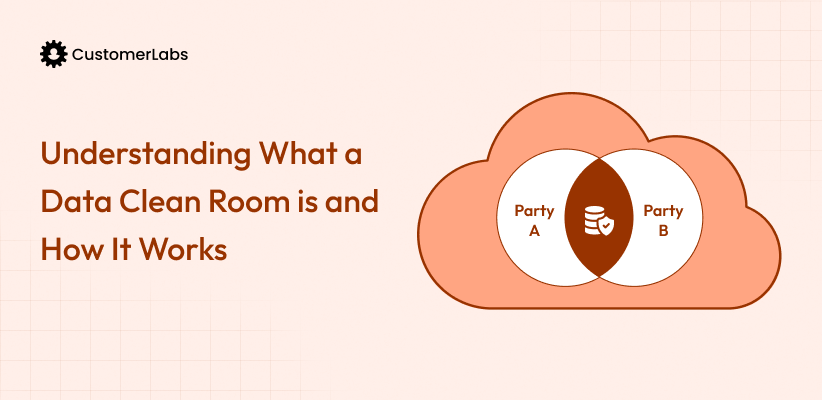Have you ever wondered how to move beyond just collecting data to actually making it work for you? Businesses today don’t just need data—they need activated data that drives impactful actions and decisions.
Data activation is the process of unlocking the full potential of your collected data, transforming it into actionable insights, and integrating it into systems like marketing platforms, customer relationship management (CRM) tools, or ad platforms. In this post, we’ll explore what data activation truly means, why it’s a game-changer for businesses, especially in performance marketing, and how you can start leveraging it effectively.
That’s where data activation comes in. In this post, we’ll break down what data activation is, why it’s so important, and how to use it to get real value from your data. Let’s dive in!
What is Data Activation?
Data activation is the process of transforming raw data into actionable insights and using these insights to drive decisions and actions. While this includes collecting, organizing, and analyzing data to uncover patterns or trends, in performance marketing, data activation takes on a more strategic role.
In this context, it involves leveraging first-party (1P) data—data that businesses collect directly from their customers—to create tailored marketing campaigns and improve advertising performance. Instead of leaving this data as isolated facts or numbers, activation means integrating it into ad platforms like Google Ads, Facebook Ads, or other programmatic advertising systems.
For example, businesses can use data activation to:
- Build custom audience segments based on user behavior or preferences.
- Deliver personalized ads that align with customer intent or previous interactions.
- Optimize bidding strategies and improve ad targeting.
- Measure and refine campaign performance through real-time insights.
Without activation, data remains passive, offering little value beyond basic reporting. Activated data, however, powers marketing strategies that are not only measurable but also impactful, leading to better customer engagement, improved ROI, and tangible business growth.
Transforming Raw Data into Actionable Insights
Raw data collects unprocessed information, such as customer behavior, transaction history, or website visits. The first step in transforming this into actionable insights is cleaning and organizing the data to make it usable. Once cleaned, the data is analyzed to find patterns or trends.
You can use tools like 1PD Ops and reverse ETL to process and move the insights from the data into systems that can be used in real time, such as marketing campaigns or sales strategies.
For example, an analysis might show that users who view specific products are more likely to purchase. Based on this insight, you can trigger a targeted email or ad.
Now that we’ve covered data activation, let’s look at its key benefits to businesses.
Benefits of Data Activation
Data activation comes with multiple benefits. Let’s take a look at a few important ones.
Unlocking Data Value and Enhanced Decision-Making
Basing your decisions on real-time, reliable data using data activation leads to more accurate forecasting, better planning, and decisions informed by actual patterns and trends. By making data work for you, you can improve their strategies and stay competitive.
Real-Time Customer Insights and Personalization
Data activation enables more personalized customer interactions, such as offering customized recommendations, sending targeted promotions, or anticipating needs before they arise. Real-time insights improve the customer experience and can increase loyalty by delivering more relevant, timely content.
Improving Operational Efficiency and Strategic Decisions
Activating data across different business areas can help identify inefficiencies and make improvements. For example, it can help optimize inventory levels, streamline workflows, or enhance internal communications.
The more data you use to make operational decisions, the more streamlined and cost-effective your business will become. Accurate, up-to-date data informs strategic decisions and allows them to be implemented faster.
Stages in Data Activation
Understanding the stages of data activation helps businesses move from raw data to meaningful actions. Here’s a breakdown of each key step in the process.
1. Data Collection: Gathering Data from Diverse Sources
Data collection is the first step in the activation process. It involves gathering data from various sources, such as customer interactions, online behavior, purchase history, and external data points. The goal is to capture relevant information across multiple channels to better understand your customers.
2. Data Analysis: Identifying Patterns and Trends
Once data is collected, the next step is analysis. You must analyze the data in this phase to identify key patterns and trends. This involves looking for correlations, behaviors, or insights that can inform decisions, whether customer preferences, seasonal patterns, or product performance.
3. Data Activation: Implementing Strategies and Campaigns
Data activation involves using the insights gained from analysis to drive actions. In the context of ad platforms, this means training algorithms with high-quality first-party data signals to optimize targeting, personalize messaging, and improve campaign performance. By feeding these platforms with accurate data, businesses can enhance ad delivery and ensure that campaigns reach the right audience with relevant content.
Beyond ads, data activation also involves adjusting sales tactics, refining customer service strategies, and personalizing marketing campaigns based on real-time insights. This stage focuses on applying data to make informed, strategic decisions that directly impact business outcomes and foster deeper customer engagement.
4. Data Measurement: Tracking and Adjusting Strategies
After implementing strategies, you need to track performance and make adjustments. This stage measures the effectiveness of campaigns and strategies, monitoring key metrics and refining approaches necessary to improve results.
Now that we’ve explored the key stages of data activation, it’s time to focus on how to get started with implementing it in your business.
Getting Started with Data Activation
To begin data activation, it’s important to set clear goals, choose the right tools, and ensure data privacy.
1: Define Clear Objectives and Engage Stakeholders
- Define specific business goals: Before implementing data activation, clearly outline your objectives. These should directly align with your business priorities, such as improving personalization, increasing conversions, or optimizing operational efficiency.
- Involve key stakeholders: Bring in critical teams from marketing, sales, IT, and product. Their input is vital in aligning data activation with broader company objectives. Collaboration across departments ensures the strategy addresses all necessary aspects of the business.
- Ensure alignment and communication: Establish clear lines of communication from the outset. This helps prevent silos and promotes a unified approach where all stakeholders are working toward the same goals. Transparent discussions will also help identify potential challenges early, ensuring smoother implementation.
2: Invest in Scalable Technology Solutions
- Choose scalable tools: Select platforms that can scale as your business grows, ensuring long-term flexibility and avoiding costly migrations later.
- Leverage a 1PD Ops Platform: A 1PD Ops platforms like CustomerLabs centralizes customer data, providing a single source of truth that connects seamlessly with CRMs, email marketing tools, and analytics software. This integration eliminates data silos and improves decision-making.
- Simplify with automation: Opt for solutions that support automation to reduce manual processes, freeing up resources and reducing reliance on technical teams for day-to-day tasks.
- User-friendly interfaces: Tools with intuitive, user-friendly interfaces streamline the data activation process, making it accessible for non-technical teams while maintaining efficiency across the organization.
3: Prioritize Data Privacy and Compliance
In today’s privacy-first landscape, data activation revolves around leveraging first-party (1P) data—the information directly collected from your customers. Unlike third-party data, 1P data is inherently more trustworthy and aligns better with privacy regulations, making it the foundation for compliant and effective data activation strategies.
- Compliance with Regulations: Ensure your data activation processes are fully compliant with key data protection regulations like GDPR, CCPA, or other regional privacy laws. This means paying special attention to how your 1P data is collected, stored, and used, and ensuring customer consent is explicitly obtained and documented.
- Built-in Privacy Features: Leverage tools that offer built-in privacy features tailored for first-party data. Features like consent tracking record user permissions, while data masking protects sensitive information during processing. By integrating these capabilities, businesses can safeguard customer trust while activating data effectively.
- Regular Audits: Conduct regular audits specifically focusing on how 1P data is handled. This includes evaluating consent records, reviewing storage protocols, and testing data security measures. Regular checks help identify and resolve compliance gaps before they become liabilities.
- Strict Access Controls: Establish strict access controls to safeguard your first-party data. Role-based permissions ensure that only authorized personnel can view, analyze, or modify sensitive customer information, minimizing the risk of misuse or breaches.
Applications of Data Activation
In this section, we’ll explore the key areas where data activation makes a real difference and how you can leverage it in your business.
Marketing
- Targeted Campaigns: Data activation enables marketers to run highly targeted campaigns by leveraging customer data, such as browsing history, purchase behavior, and engagement patterns.
- Behavioral Insights: Brands analyze behaviors such as browsing patterns and past purchases to gain a deep understanding of individual preferences, enabling more accurate targeting across platforms.
- Personalized Offers: Marketers can use this data to create personalized content and tailored offers that resonate with specific customers. This can be applied to email marketing and WhatsApp marketing, ensuring that each message is highly relevant and compelling.
- Increased Engagement: Personalized messaging leads to better engagement, as customers are more likely to respond to relevant content. By activating this data across email marketing platforms and WhatsApp, businesses can foster direct, one-on-one communication, driving higher conversion rates and increasing revenue.
Sales
- Efficient Lead Management: Data activation allows sales teams to access real-time insights, helping them pinpoint high-priority leads based on behavior and engagement.
- Lead Journey Tracking: By tracking how leads interact with content or touchpoints, sales teams can monitor their progress and identify optimal times to reach out.
- Tailored Follow-ups: With actionable insights into customer preferences, sales teams can craft more personalized, relevant follow-up communications, improving engagement and response rates.
- CRM Integration: Seamless integration with CRM systems ensures that all customer data, including past interactions and current behaviors, is easily accessible, helping sales teams stay updated without manual data entry.
Customer Support
- Instant Access to Customer History: Activated data provides customer support agents with real-time access to a customer’s full interaction history, including past inquiries, purchases, and preferences. This enables quicker responses and more informed interactions.
- Fewer Questions, Faster Resolutions: With comprehensive data, agents can reduce repetitive questions and address customer issues more efficiently. This leads to shorter resolution times and a smoother support experience.
- Personalized Service: Activated data enables support teams to tailor responses based on specific customer needs or behaviors. Personalized interactions increase the chances of solving issues the first time, improving overall satisfaction.
- Improved Accuracy: Having all relevant data in one place reduces errors caused by lack of information or miscommunication. Agents can offer accurate solutions and ensure customer expectations are met.
Operations
- Easier Access to Info: When data from different departments (sales, marketing, support, etc.) is activated, everyone can access the same, up-to-date info. No more digging through silos or outdated spreadsheets.
- Smoother Workflows: With everyone on the same page, internal processes become more efficient. Teams can get the data they need without wasting time, making everything run faster and more smoothly.
- Better Collaboration: When everyone has access to the same data, collaboration is much easier. Sales can pass information to support, and marketing can align with operations, simplifying handoffs.
- Boosted Productivity: Activating data reduces the time spent searching for information. Teams spend less time hunting for answers and more time getting things done.
Challenges in Data Activation
While data activation offers significant benefits, putting it into practice comes with its own set of challenges.
Overcoming Data Silos
One of the biggest obstacles in data activation is the presence of data silos. Businesses often store their data in separate systems or departments, making accessing or combining insights across the organization difficult.
When data isn’t integrated, it can’t be fully activated, leaving valuable insights untapped. Breaking down these silos and centralizing data helps improve accessibility and create a unified view of customer behaviors and operations.
Ensuring Data Accuracy and Reliability
Data accuracy is crucial for effective decision-making. Inaccurate or outdated data can lead to misleading insights, impacting everything from marketing strategies to customer support.
Regular data cleaning and validation processes are needed to ensure data remains reliable. Without these, your business risks making decisions based on flawed information, which can harm overall performance and strategy alignment.
Managing Technical Complexity and Scalability
As businesses scale, so does the volume and complexity of their data. Managing this increasing load while maintaining performance can be hard. The tools and systems used for data activation must be scalable to handle larger datasets without compromising speed or accuracy. Otherwise, your business could face slow performance, delayed decision-making, and even errors in data processing as their datasets grow.
In addition, integrating advanced technologies like automation, machine learning, and real-time data processing adds another layer of complexity. Automation requires seamless system coordination, machine learning needs clean data and ongoing tuning, and real-time processing demands fast, efficient systems. Each of these technologies brings challenges, from data consistency to system performance at scale.
Tools and Strategies for Data Activation
When activating data, having the right tools and strategies is key to turning that raw information into something meaningful. Here’s how you can make it work.
Reverse ETL and Data Flow Processes
Reverse ETL is an important tool for data activation. It helps move data from a warehouse to the systems where teams work, like CRM or marketing platforms. This way, everyone—from sales to support teams—can access and use up-to-date customer data. Reverse ETL automates data flow, so teams don’t need to update systems or deal with delays manually, making it easier to act on data quickly.
Role of Automation in Operational Systems
Automation helps businesses use data better by taking over repetitive tasks like data cleaning, segmentation, and reporting. By automating these processes, companies can ensure their data is always accurate and up-to-date.
This leads to more efficient decision-making, faster campaign execution, and better results. When data flows automatically through operational systems, teams can focus on strategy rather than manually managing data.
Using CDP and iPaaS Solutions
Customer Data Platforms (CDPs) gather and store data from multiple sources, providing a single view of the customer. They connect with marketing and sales tools, allowing businesses to personalize customer experiences based on this data.
iPaaS (Integration Platform as a Service) solutions help connect different systems and ensure data flows smoothly between them. Together, CDPs and iPaaS make it easier to activate data and run targeted marketing campaigns based on real-time customer insights.
1PD Ops for Data Activation
First-party data operations (1PD ops) are essential for seamless data activation. They focus on collecting, unifying, and activating customer data directly from your owned channels—like websites, apps, and CRMs—ensuring compliance with privacy regulations such as GDPR and CCPA.
By implementing a robust 1PD ops platform, you can create a centralized hub for all your first-party data, enabling teams to access accurate, real-time insights. This empowers you to build personalized customer experiences, optimize ad campaigns, and improve ROI.
1PD ops like CustomerLabs take this a step further by seamlessly integrating customer data from various sources, providing real-time, actionable insights, and enabling businesses to personalize their marketing efforts with greater precision and efficiency.
If you’re looking to activate data responsibly while maximizing its potential, investing in a solid 1PD ops strategy is the way forward.
Conclusion
Data activation is about making your data work for you. It turns raw data into insights you can use, helping your business make smarter decisions and connect with customers more effectively. When done right, it leads to better marketing, better customer experiences, and a more efficient business overall.
CustomerLabs 1PD Ops makes it easier for businesses to do just that. The platform combines customer data from various sources and turns it into actionable insights in real-time. This simplifies the process of using data to drive decisions and personalize your outreach. At CustomerLabs, our platform integrates with your existing tools to simplify data activation and make customer insights work for you. If you want to get more out of your data, this is where to start. Ready to see how it works? Start your free trial today and unlock the full potential of your data.







